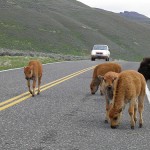
MT Gov wants to hunt bison in Yellowstone Park. The USDA wants to chemically castrate them. Either way, ranchers get to cut their numbers.
Keep reading Yellowstone Bison to be hunted or chemically castrated
 MT Gov wants to hunt bison in Yellowstone Park. The USDA wants to chemically castrate them. Either way, ranchers get to cut their numbers. Keep reading Yellowstone Bison to be hunted or chemically castrated  A controversial grazing deal has the federal government paying $3.3 million to graze on land that it should be able to buy outright for $4-8 million. Keep reading Why are the feds paying $3.3 million to graze for 30 years on land worth only about $4 million? 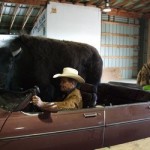 Canada’s Buffalo Whisperer takes Bailey for a ride in a convertible. The US and South Africa have their very own Buffalo Whisperers, too. Here are each of their cases to be the real Buffalo Whisperer. Keep reading 3 Guys Vie for title of “Buffalo Whisperer” in Canada, US and S Africa 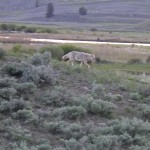 You know how Americans are appalled every time there’s a story out of China or Iraq about the government thugs primitively rounding up dogs and shooting them? Well, we do that, too. On purpose. Federal agents are out there killing dogs, more than one a day. They shot 157 dogs to death. And it’s not just in the yahoo states out west, either. (Although Texas and Arizona are the top states of dog-killing.) The USDA somehow insinuated itself into dog situations in 32 states. They went out and shot two dogs in Ohio and 30 in California. And it wasn’t because they feared they were rabid, either. They only tested 14 dogs for rabies. Keep reading USDA Kills Another 4 million animals, including 477 dogs and 1,991 feral cats 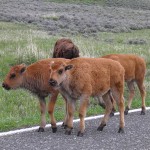 It wasn’t enough to see bison, we wanted to see them doing something. They delivered. Over six days in the park my husband David and I got to see bison nursing calves, herds blocking the road, bulls ramming each other, using their horns and mouth to strip bark off trees and tons of grazing or napping Keep reading Yellowstone Buffalo: Don’t Worry, If You Visit, You’ll See Plenty of ’em 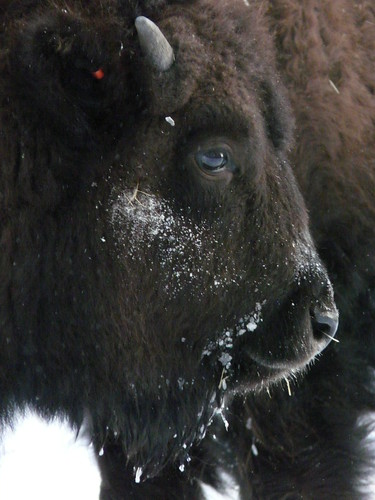
Maybe Robert R. Wilson, the guy who set up Fermi Lab, thought he’d bring people in with the charismatic megafauna and they’d stay for the high-energy physics. For reasons that are somewhat vague, he got the place a herd of bison, which still roam the 6,800 acre campus. Only a handful of bison herd live in Illinois, so I went to visit them on New Year’s Day. Just show a driver’s license and you can visit FermiLab, which is like a quirky college campus with lots of big art and unusual buildings. About 15 bison interrupted their lunch when we approached, but got bored with us as soon as they realized we had no food. The huge double-fenced pastures can support about 70 animals (as long as they also get hay), but Fermilab keeps the herd at about 45 by selling off the bison. Mainly the males go to keep the population genetically fit. We were apparently pretty lucky to see them; a guy who was showing them to his daughter explained that they’ve been inside a lot lately. They came empty-handed, too, which disappointed the bison so much that one charged at the fence. Normally when you think of animals at a big lab, you don’t think of fun, but that’s all the bison are really here for. Founding director Wilson made the place shockingly inviting; with unusual buildings and big art, it looks like a quirky college campus. The official reason is something about connecting to the prairie heritage. Huh? I wish Keep reading Why Does Fermilab Have Bison? Supposedly Science, But Probably Just for Fun Get a Glimpse of Native Illinois Wildlife on their Winter Break–Join the Wildlife Prairie State Park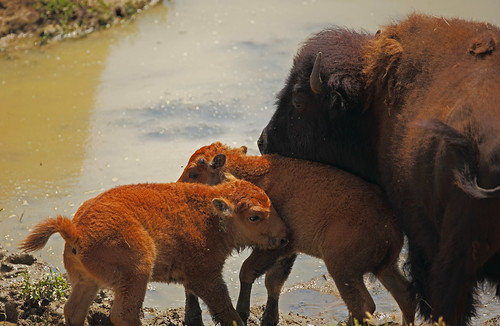 Mother Bison directing traffic,originally uploaded by Todd Ryburn. Just a couple hours west of Chicago a herd of bison is taking the winter off from delighting kids. Wildlife Prairie State Park–a unique combination of wildlife center, praire re-enactment and park–closes for the winter. The animals in big herds, the elk and bison, are taken off public display to give their summer pastures a rest, says park spokesperson Kelly Stickelmaier. The enclosures (80 acres for the elk) are big enough to approximate a natural setting, but not so huge you can’t see them. (Just check the park’s very active flickr group and you can see how much of the animals visitors can see.) The park’s 18 bison are especially cooperative, coming up to the viewing stand, where they’re fed at 1 o’clock. “The elk are a little more persnickety, especially the boys,” Stickelmaier says. Because the bison herd reproduces, the park sells off however many are born each year to keep the total at 18. Badger at WPSP,originally uploaded by Mark Koonce. I don’t think I’ve seen another wildlife park that has badgers–and, believe me, I’ve looked. They’ve also have otters, eagles that came in through wildlife rehabilitation, skunks, bobcats and cougars. Philantrhopist Will Rutherford started the park in 1978 mainly as a kind of rehab area for animals from the Brookfield Zoo. The park eventually shifted to native animals, then Rutherford gave the park to the state in 2000. Rutherford’s family’s Forest Park Foundation still supports the park, the Peoria Journal-Star says, but it can’t make Keep reading Get a Glimpse of Native Illinois Wildlife on their Winter Break–Join the Wildlife Prairie State Park 
When I was in Germany a few weeks ago I got to visit Saarbrücken Wildpark, which confused me. In the middle of a forest were huge pens for native animals. No addmission charge, just come on in, enjoy the animals or the woods. I wondered how this place could survive if the animals weren’t producing food. “By the way, the animals are not supposed to be eaten!” says Michael Wagner, head of Saarbrucken’s forestry department. All the Germans I mentioned this to were equally appalled at my assumption. The animals are there neither to be rescued nor eaten, but just for people to enjoy. “The Wildpark is intended as a greenbelt recreation area for the citizens of Saarbrücken, especially for families with children,” he says. They also have a geology-themed trail. Even though the center isn’t set up specifically for animal welfare, they do sometimes take in a few orphans, Wagner says. And they are part of the important project to recover the wisent. Only one herd of the European bison was left in the Polish woods after World War II, but there are now several thousand because of an elaborately managed breeding exchange program across Europe. View Animaltourism.com Europe in a larger map It’s fantastic that Germans and other Europeans have recognized that native animals in their natural environment (or a close enough approximation) are just fun to see. I wish we had wildparks here. The wildparks are all over the place. ZooInfos lists 144 native wildlife parks in Germany; 29 in Austria and 16 in Switzerland. Keep reading Wildparks All Over Germany and Europe  Last week I got to visit the Saarbrucken Wildpark, but I’m still not completely sure what I saw. There’s no exact translation for “Wildpark,” but these little nature attractions are all over Germany. Native animals–wild boars, fallow deer, red deer, bison –and farm animals like goats roamed in huge pens in the woods. But then when we got to the cafeteria there were signs and a brochure boasting of “wildsalmi” and how great it is that they let animals live wild until they die.So were these animals here going to be eaten? Were they rescued from injury? Or were they just here for a pleasant show? The answer is probably the last one, as near as I can gather so far. The couple Germans I’ve talked to were adamant that the animals at wildparks aren’t eaten. They didn’t know about rescue. As a small-time wildlife rehabber, I’d think the parks would be the perfect place for injured, orphaned or diseased animals that couldn’t survive in the wild. They seem to be a unique German–or maybe European–tradition going back decades. This one was built in 1929. German friends say they went as kids. That explains why the extraordinarily helpful train clerk in the Saarbrucken station practically tried to talk me out of going, noting that there were certain hours to go “if you want a pony ride.” Europeans may be bored with their fallow deer and wild boars, but I’ve never seen them. I couldn’t have been more Keep reading German Wild Parks: Part Zoo, Part Sanctuary, Part Walk in the Woods |
|
|
Copyright © 2024 AnimalTourism News - All Rights Reserved |
|
Recent Comments